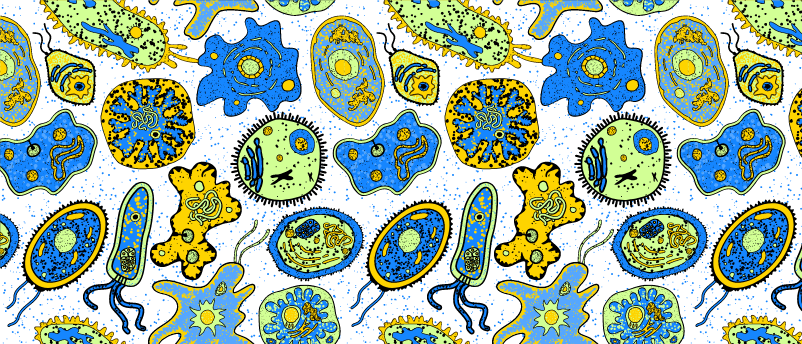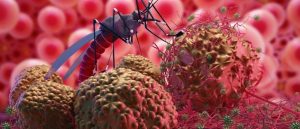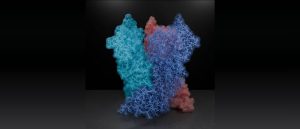
BioTechniques News
Tristan Free

Microbiology investigates the mighty, minute organisms – including bacteria, archaea, algae, fungi, protozoa and viruses – that play an essential role in our health and ecosystems around the globe.
Microbes’ diversity makes them an interesting group of organisms to study. In this piece, we highlight just a few of the latest microbiology discoveries and the innovative techniques that are being developed to learn more about them. From a novel approach for rapidly identifying bacterial species to using algae-derived vitreous body for treating retinal detachment, microbes certainly have a wide range of functions that we wish to both study and harness.
Bacteria: a novel approach for rapidly identifying bacterial species
Researchers at the Hefei Institutes of Physical Science, Chinese Academy of Sciences (China) have developed a method for identifying six common pathogenic bacterial species based on the volatile organic compounds they emit. Using proton transfer reaction-mass spectrometry and fast gas chromatography-proton transfer reaction-mass spectrometry, the team was able to identify bacteria quicker than matrix-assisted laser desorption ionization–time-of-flight mass spectrometry, which relies on growing the infection-causing bacteria in the lab. This process can take up to 3 days, while the team’s novel approach can identify bacteria in just 3 hours.
“We found each type of bacteria has its own unique smell,” reported Chengyin Shen who led the team, “this can be used for rapid identification of bacterial species.”
 A rapid test for diagnosing nontuberculous mycobacteria infection
A rapid test for diagnosing nontuberculous mycobacteria infection
A diagnostic tool has been developed to identify nontuberculous mycobacteria (NTM) infections, dramatically expediting the diagnostic process from 6 months to 2 hours.
Archaea: the molecular machinery underlying morphology
Now here’s a domain of microorganisms we don’t know a whole lot about. From inhabiting extreme environments to the digestive systems of animals, archaea have an extraordinary ability to change their shape to match their environment. Until now, little has been understood about how they manage to do this. Researchers at the University of Pennsylvania (PA, USA) have shed light on the molecular machinery governing archaea’s morphology. When a high school summer intern in the lab discovered altered motility in Haloferax volcanii archaea, further microscopy investigation was conducted to reveal that these faster-moving archaea only formed rod shapes, never disks. This finding piqued their interest, investigating how archaea change shape. Combining transposon insertion screens, quantitative proteomics, reverse genetics and advanced microscopy, the team determined the proteins crucial to cellular shape change and monitored their behavior within the cell.
 It’s time to give small proteins a bit of the limelight
It’s time to give small proteins a bit of the limelight
Aisha Burton is a Postdoctoral Research Fellow at the National Institutes of Health , where her research focuses on characterizing small proteins to understand regulatory mechanisms. Here, we speak to Aisha about her research, the challenges of studying small proteins and the advice she would give to her younger self!
Algae: vitreous body for treating retinal detachment
When we think of seaweed, we don’t typically think about what it could do for treating ocular conditions, such as retinal detachment. However, taking an inspired conceptual leap, a multi-institutional team based in South Korea utilized alginate – the substance on seaweed that makes it slick – derived from algae to create an artificial vitreous body, a gel substance filling the space between the retina and the lens.
When the retina detaches from the inner wall of the eye it moves into the vitreous cavity. Existing treatments replace the vitreous body with medical fillers that can cause side effects, encouraging the team to develop a new kind of filler that wouldn’t cause adverse reactions. They used alginate to create a medical composite hydrogel that is similar to the natural vitreous body.
In vitro physicochemical, rheological and optical characterization of the alginate hydrogel was performed, and in vivo evaluation confirmed its efficacy, maintaining sight post-surgery and exhibiting no side effects. Its ability to regulate fluid dynamics within the eye also contributes to stabilization of the retina, making it a potential option for treating retinal detachment.
 Seaweed molecules improve synthetic vascular grafts
Seaweed molecules improve synthetic vascular grafts
Applying a molecule derived from seaweed to synthetic vascular grafts improves in situ endothelialization and could lead to better bypass surgery outcomes.
Fungi: root microbiome affected by host plant genetics
An international collaboration led by the University of Bonn (Germany) has revealed how bacteria and fungi promote the healthy function of plant roots, such as maize. Although previously thought to be the soil that dictates the microbial composition around roots, it appears that the plant’s genetic makeup – determined using DNA sequencing – plays a key role in determining which microbes cluster around its roots.
The root microbiome is an important player in nutrient and water absorption by the roots as well as protecting the roots from harmful agents. Because the microbiome influences plant resilience to environmental stressors, corresponding author Frank Hochholdinger believes they could cultivate “maize varieties better suited to drought and a lack of phosphorous by using genome and microbiome data.”
Getting to the root of mangro ve RNA isolation
ve RNA isolation
Scientists have optimized a protocol to achieve a higher quantity and quality of isolated RNA from mangrove root tissues rich in secondary metabolites.
Protozoa: parasite strain diversity impacts Chagas disease progression
Chagas is a tropical disease caused by Trypanosoma cruzi parasites and is spread by kissing bugs (triatominae). Researchers at Tulane University (LA, USA) have discovered something new about Chagas progression, finding that rhesus macaques infected with multiple strains of the parasite could control the progression and lessen the severity of the disease better than those infected by a single or fewer strains.
The team used qPCR to measure blood parasite burden and multiplex PCR to perform parasite genotyping, among other techniques. “Since the 1980s, researchers have proposed that different strains could be associated with different disease outcomes due to the parasite’s genetic diversity, but decades of research failed to uncover clear associations,” remarked lead author Eric Dumonteil. “In finding a clear association, these results provide a new framework for the development of more effective treatments and vaccines.”
 Malaria parasite uses decoy proteins to distract the immune system
Malaria parasite uses decoy proteins to distract the immune system
The first high-resolution map of proteins in the malaria parasite Plasmodium falciparum (P. falciparum) suggests that the parasite uses decoy proteins to limit our long-term immune response.
Virus: Epstein-Barr hijacks host genome
Nasopharyngeal cancer (NPC) is associated with Epstein-Barr virus (EBV) infection; however, it is unclear how virus–host interactions produce chromatin changes in NPC. EBV is associated with many cancers as when it infects a host, EBV targets heterochromatin, activating latent host and viral genes that encourage tumor formation. Using Hi-C, 4C-seq, CHIP-seq, and RNA-seq analyses, a multi-institutional team based in Japan and Singapore has revealed that EBV hijacks host enhancers to alter the host genome and promote gene dysregulation, which drives the progression of NPC.
 Docs unlock the pox: key insights into the molecular structure of poxvirus cores
Docs unlock the pox: key insights into the molecular structure of poxvirus cores
Researchers utilize electron microscopy coupled with AlphaFold software to glean key insights into the structure of the core of poxviruses.
The post The latest developments in microbiology from a diverse cast of characters appeared first on BioTechniques.
Powered by WPeMatico
